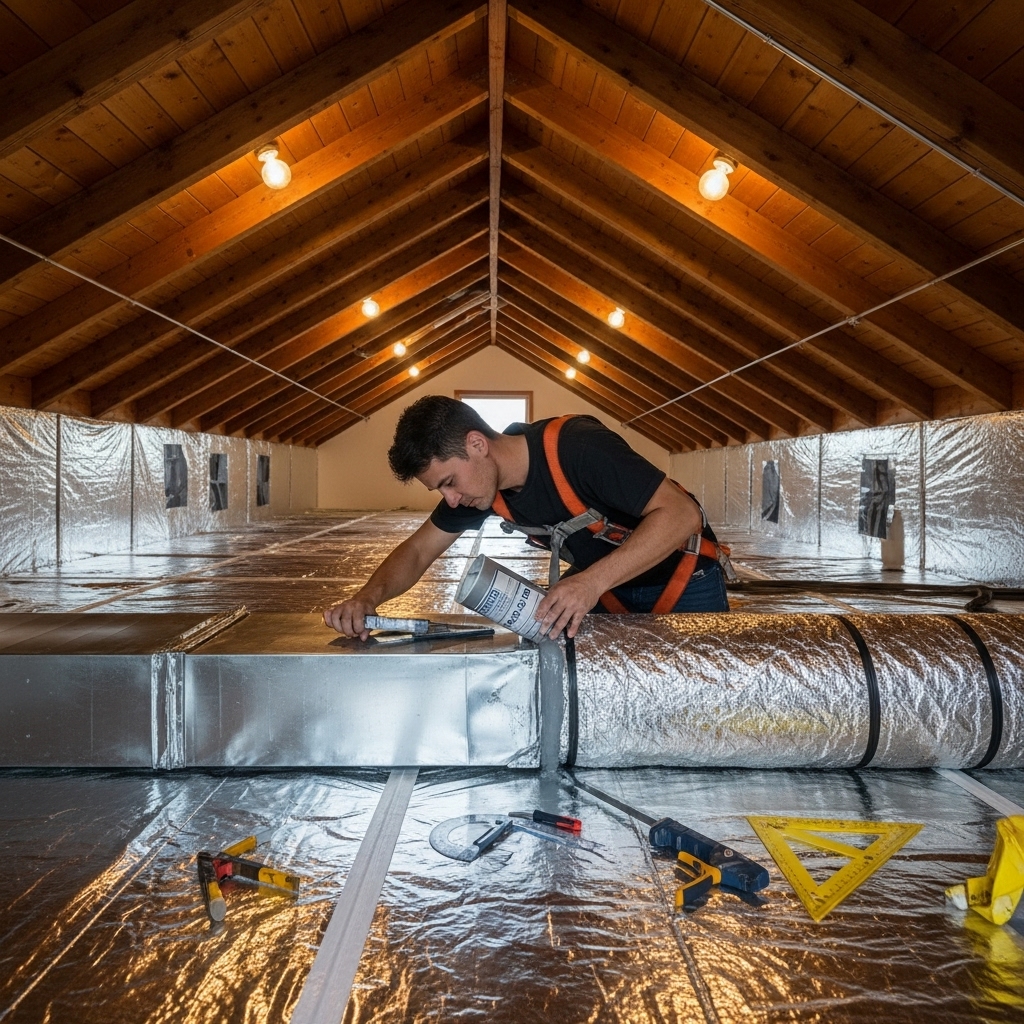Residential Duct Replacement Services Tailored to Malibu Homes
Replacing residential ductwork is one of the most impactful upgrades a Malibu homeowner can undertake to improve comfort, air quality, and HVAC reliability. Coastal weather, hillside architecture, and a wide range of building styles create challenges that demand design-first thinking. Whether you live in a compact bungalow by the beach or a multi-level property tucked in the canyons, a thoughtfully engineered duct system will deliver even temperatures, quieter operation, and healthier indoor air. The process begins with assessment and planning, continues through careful installation, and ends with testing that proves the system performs as intended. If you are just starting to explore options, focusing on the fundamentals will help you make confident decisions about duct replacement that stands the test of time.
Why Duct Replacement Matters for Comfort and Health
Many Malibu homes rely on legacy ductwork that was never designed for today’s equipment or for additions completed over the years. Leaky returns can pull dusty attic air into living spaces. Undersized branches force the system to work harder, leading to noise and inconsistent temperatures. In contrast, a modern, sealed, and properly sized network delivers the air your equipment is designed to move, protecting the blower and helping every room feel consistently comfortable. With reduced leakage, filtration works better, and your indoor air benefits, particularly during wildfire smoke events or when coastal humidity lingers in the marine layer.
What a Comprehensive Service Includes
Residential duct replacement is not a single task; it is a sequence of coordinated steps. A service provider that treats each phase with equal care achieves superior results, reduced callbacks, and a smoother homeowner experience.
- Discovery and goals: The team learns about rooms that are too hot, too cold, or too noisy, and clarifies any indoor air quality priorities.
- Inspection and measurements: Technicians document duct sizes, routing, static pressure, and any signs of damage, biological growth, or previous patchwork.
- Design and layout: Using established methods, they size trunks and branches, plan return paths, and specify register styles and locations.
- Removal and prep: Old ducts are carefully removed, and surfaces are cleaned or repaired. Access strategies are confirmed for attics or crawlspaces.
- Installation and sealing: New ducts are routed with proper support, minimal bends, and tight mastic sealing. Insulation jackets are continuous and intact.
- Balancing and testing: Airflow is measured and adjusted with dampers. Static pressure readings confirm the system operates within safe targets.
- Homeowner review: The team explains the new layout, damper positions, and filter guidance, and provides documentation for future service.
Material Options for Malibu Residences
The right material combination depends on the home’s structure and access. Sheet metal provides durability and stable geometry, especially for trunks. High-quality flexible duct simplifies final connections in tight areas but must be correctly tensioned and supported to avoid friction losses. Duct board can offer quiet operation and good thermal performance when fabricated and sealed properly. No matter the materials, the priorities remain the same: airflow efficiency, airtight sealing, and robust insulation suitable for attic heat and coastal conditions.
Design Decisions That Improve Everyday Living
Airflow design directly affects how your home feels. Thoughtful placement of supply registers reduces drafts, while sufficient returns help the system breathe easily. In rooms with large windows or high ceilings, registers with appropriate throw and spread ensure conditioned air mixes well with room air. Hallways and open-concept spaces benefit from balanced branching that keeps pressure even across zones. If an addition changed your floor plan, the new duct design should reconnect the system to the way you actually live in the space.
Handling Malibu’s Environmental Challenges
Coastal air introduces salt that can accelerate corrosion, and marine layers can leave attics humid in the mornings before temperatures rise. Installers counter these factors with corrosion-conscious fasteners, correct insulation thickness, and careful sealing. During wildfire season, tight ducts and reliable filtration help keep particulate intrusion at bay. Pest deterrence and moisture awareness also matter; a quick look at crawlspace conditions can reveal issues that are best addressed during replacement, such as sealing gaps or improving supports.
Access and Logistics in Real Homes
Homes are lived-in spaces, and good service respects that. Crews protect finishes, plan staging to reduce disruption, and coordinate parking and access. In properties with narrow attic hatches or low crawlspaces, teams may pre-fabricate sections to speed installation and reduce time spent in tight areas. This efficiency contributes to smoother projects and predictable timelines.
Noise Reduction Through Better Ductwork
Excess noise often traces back to high static pressure, tight-radius turns, or registers that are not well matched to room needs. A redesigned system that smooths airflow, increases return capacity, and selects appropriate registers can dramatically reduce sound levels. Many homeowners notice that living areas feel calmer once the new ducts are balanced and the blower is no longer laboring against restrictions.
Indoor Air Quality Improvements
Leaky return ducts can draw particles, insulation fibers, or odors from unconditioned spaces. With sealed pathways, your filters capture more of what they are meant to catch, and your living areas stay cleaner. If you have sensitivity to allergens or are concerned about seasonal smoke, discuss filtration strategies during the design phase so the duct layout supports the filter’s airflow requirements without adding undue resistance.
Mid-Project Insights and Adjustments
As old ducts come out, installers sometimes find hidden constraints or shortcuts from past work. Skilled teams document these discoveries and adjust routing, register placement, or damper locations to maintain performance. This is also the ideal moment to address rooms that have always been difficult to condition. A minor change in branch size or a revised return path can yield outsized comfort gains. Homeowners who review modern approaches to duct replacement often appreciate how these mid-course tweaks protect the final outcome.
Maintenance After Replacement
After the project is complete, protecting your investment is straightforward. Replace filters on schedule, ensure supply and return grilles remain unobstructed, and check accessible connections after any roofing or attic work. If comfort shifts or new noise appears, a quick service visit to verify damper positions and pressure keeps things optimized.
What to Expect from a High-Quality Provider
Look for a provider that communicates clearly, documents each phase, and invites questions. They will explain how they measured, why they chose certain materials, and how the design addresses your home’s quirks. They will treat your property with care, maintain a clean work area, and ensure you understand the system upon completion. Most importantly, they will verify results rather than relying on assumptions.
Frequently Asked Questions
Q: How do I know if replacement is necessary? A: Persistent comfort issues, visible damage, or widespread leakage often indicate that a comprehensive replacement will serve you better than piecemeal repairs.
Q: Will new ducts make my home quieter? A: Yes. Proper sizing, smoother transitions, and adequate returns reduce the blower effort and lower noise.
Q: Can I keep my existing HVAC equipment? A: In many cases, yes. The new duct design should be matched to your equipment’s airflow capabilities.
Q: Is permitting required in Malibu? A: Local requirements apply. A reputable provider will handle permitting and coordinate inspections.
Q: How long does a typical home project take? A: Timelines vary with size and access. Your provider will outline a clear schedule from removal to testing.
Q: Does ductwork affect indoor air quality? A: Sealed returns and well-insulated supplies help keep contaminants out and make filtration more effective.
Q: What materials are best? A: The right combination depends on access and design goals. Quality installation and sealing matter most.
Q: Will my rooms feel more even? A: Balanced branching and correct register choices deliver more consistent temperatures throughout the home.
Q: How should I prepare for installation day? A: Clear access points, protect special items, and discuss parking or gate details with your provider.
Plan Your Upgrade with Confidence
Residential duct replacement, done right, transforms daily comfort and supports healthier living. With design-first planning, durable materials, and careful verification, your Malibu home can enjoy steady temperatures, quieter operation, and cleaner air. Start by clarifying goals, scheduling an assessment, and reviewing a documented plan that explains how each decision supports performance. The result is a resilient system tailored to your space and the environment you live in.
Take the Next Step
If you are ready to elevate comfort and air quality in your Malibu home, connect with a provider that prioritizes design, communication, and proven results. Share your goals, discuss rooms that need attention, and review a clear plan from removal to balancing. When you are prepared to move forward, schedule your evaluation and set a timeline that fits your routine. For a smooth path from first conversation to verified performance, book your duct replacement with a team that measures, documents, and stands behind the work.

